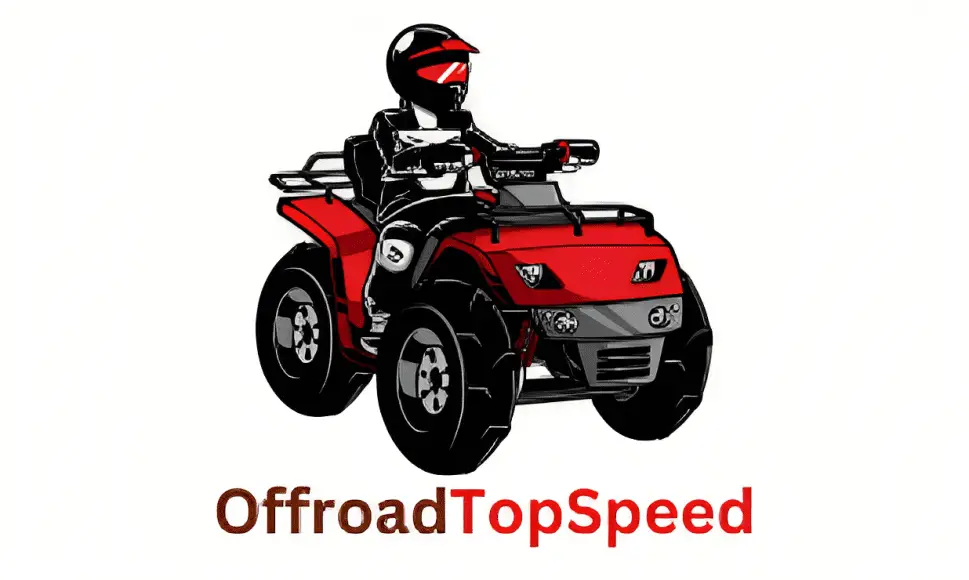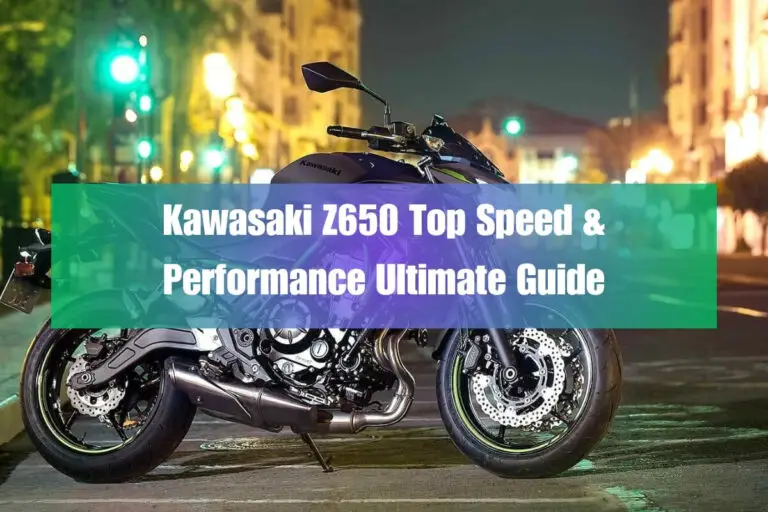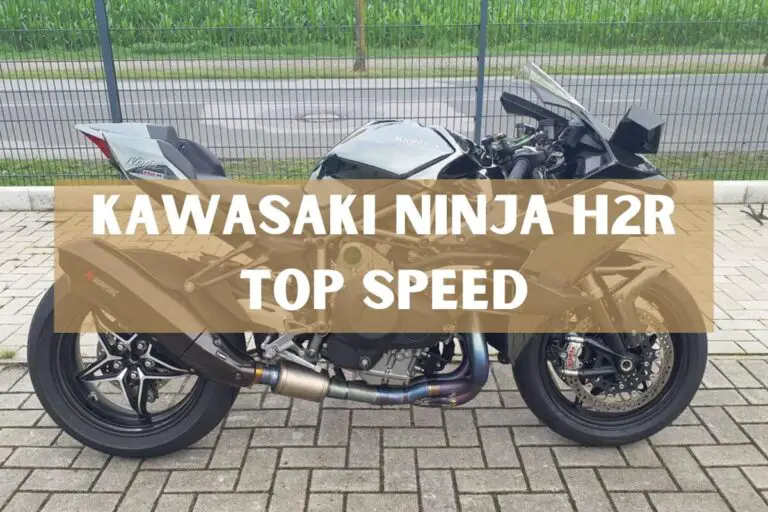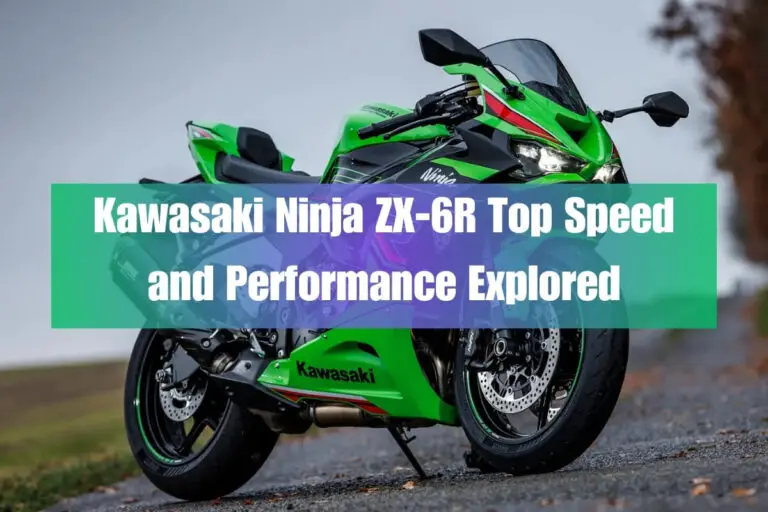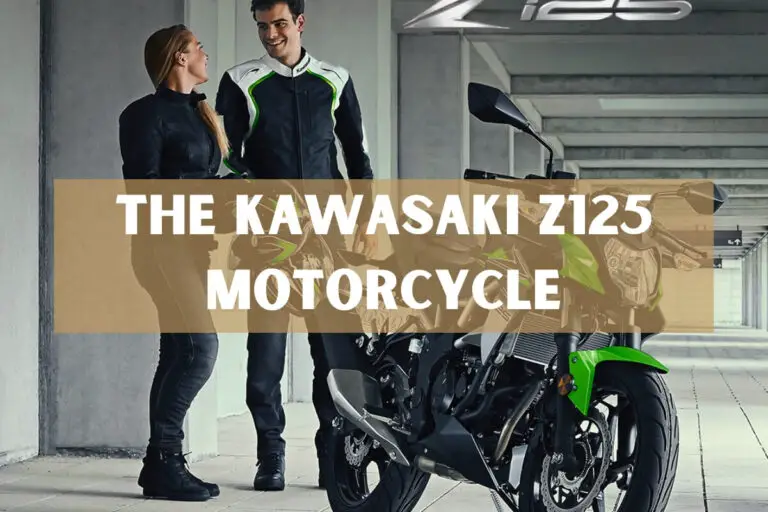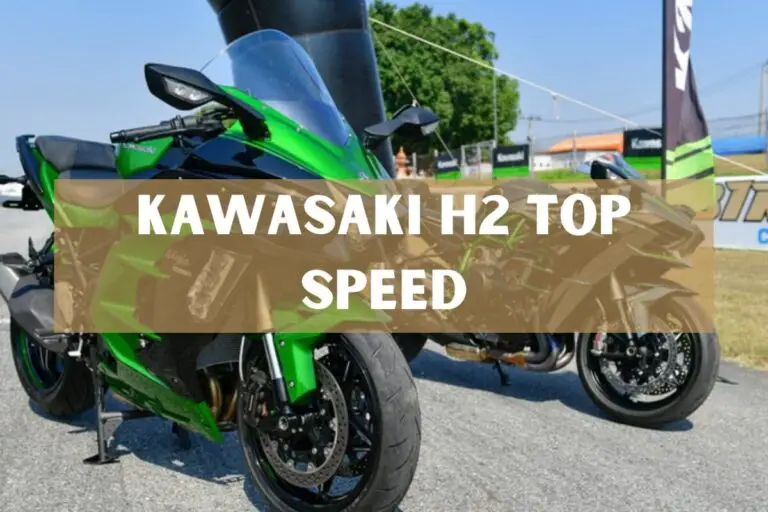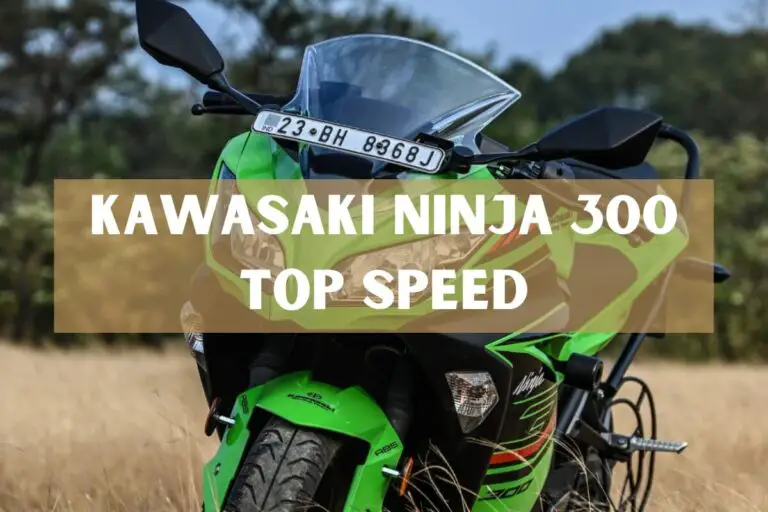Kawasaki Z400 Top Speed: Unveiling the Naked Rocket
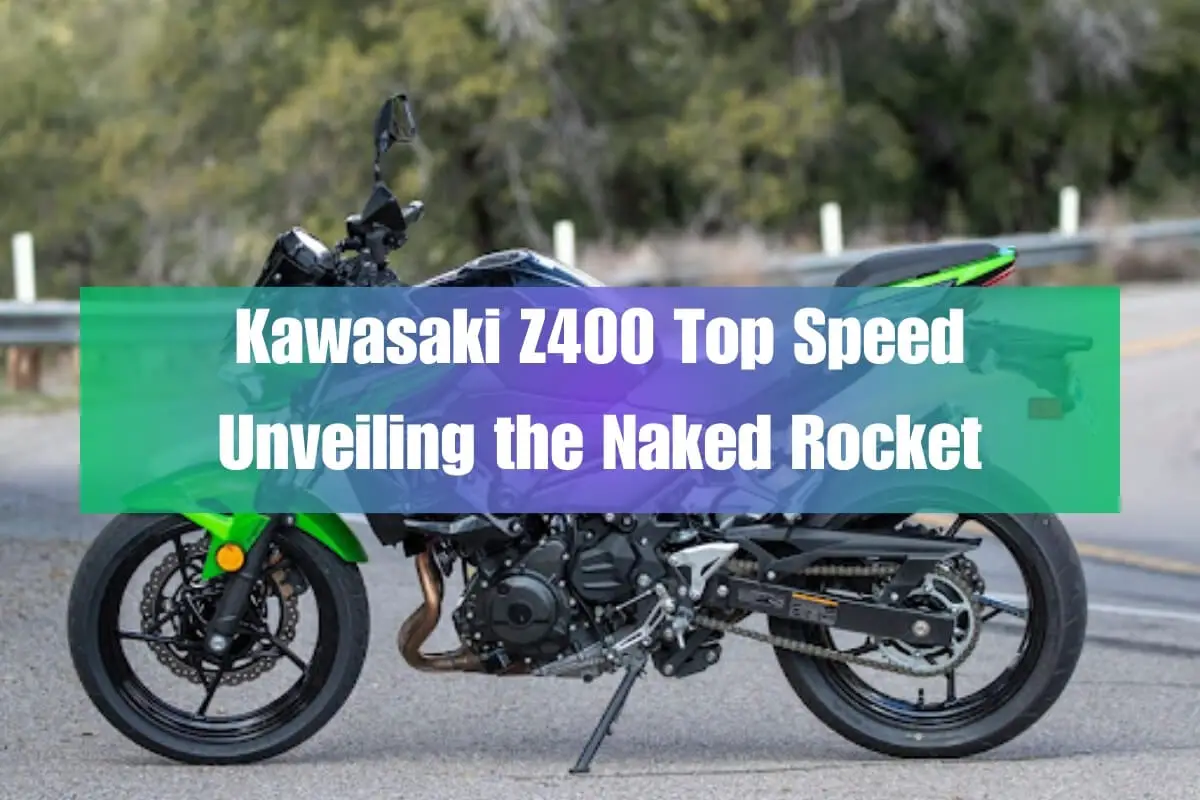
The world of high-performance naked bikes is one that promises an unparalleled rush of adrenaline and a pure, unadulterated riding experience. Among the ranks of these exhilarating machines is the Kawasaki Z400, a bike that has captured the hearts of many with its perfect blend of power, agility, and affordability. If you’re a thrill-seeker or a newcomer to the world of motorcycling, you’ve likely found yourself wondering, “Just how fast can the Kawasaki Z400 go?”
This guide looks at how fast the Kawasaki Z400 motorcycle can go. It explores the Z400’s quick acceleration and real-world speed performance. The guide also covers factors that impact the Z400’s high speeds. Get ready to see how thrilling this quick naked bike is.
Kawasaki Z400 Overview
Tracing its roots back to Kawasaki’s illustrious history of producing some of the most iconic and revered motorcycles, the Z400 is a true embodiment of the brand’s spirit of performance and innovation. Designed as an entry-level naked bike, the Z400 packs a punch that belies its stature, offering a perfect balance of power, agility, and affordability.
At the heart of this beast lies a 399cc parallel-twin engine that delivers a respectable 48 horsepower and 28 lb-ft of torque. This power plant is mated to a slick-shifting six-speed transmission, ensuring that you have the necessary gears to extract every ounce of performance from the Z400.
One of the standout features of the Z400 is its lightweight chassis, which tips the scales at a mere 362 pounds (164 kg). This featherweight construction, combined with its nimble handling and responsive steering, makes the Z400 an absolute joy to ride, whether you’re carving through tight city streets or unleashing its potential on open stretches of tarmac.
The Kawasaki Z400 is currently priced at around $5,000 in the United States, making it an incredibly attractive option for riders seeking an exhilarating and budget-friendly entry into the world of high-performance naked bikes.
Performance: Acceleration and Top Speed
Now, let’s get to the heart of the matter: how fast can the Kawasaki Z400 go, and what kind of acceleration can you expect from this feisty little rocket?
Acceleration
Straight-line acceleration is where the Z400 truly shines. According to real-world testing, this bike can sprint from 0 to 60 mph (96 km/h) in a blistering 4.34 seconds, making it one of the quickest bikes in its class. The quarter-mile (402 meters) is dispatched in a mere 13.34 seconds, with the Z400 crossing the line at an eye-watering 98 mph (158 km/h).
These impressive acceleration figures can be attributed to a combination of factors, including the bike’s lightweight construction, gearing ratios optimized for quick launches, and a responsive engine that delivers its power in a linear and predictable manner.
Top Speed
But what about the all-important top speed? Well, the Kawasaki Z400 doesn’t disappoint in this department either. In controlled testing environments, the Z400 has been clocked at an impressive 112 mph (180 km/h) top speed.
It’s important to note that this figure can vary depending on several factors, such as rider weight, wind conditions, and any performance modifications made to the bike. However, even in its stock form, the Z400 is more than capable of keeping up with fast-moving highway traffic and providing an exhilarating rush when you twist that throttle to the stop.
Compared to its closest competitors, such as the KTM 390 Duke and the Honda CB500F, the Kawasaki Z400 holds its own in terms of top speed, often outperforming or matching these bikes in real-world scenarios.
The Riding Experience
While raw performance figures are undoubtedly impressive, they only tell half the story. The true magic of the Kawasaki Z400 lies in the riding experience it offers, a harmonious blend of power, agility, and confidence-inspiring handling.
From the moment you swing a leg over the Z400, you’ll be greeted by a comfortable and upright riding position that provides excellent visibility and control. The bike’s lightweight chassis and nimble steering geometry make it a dream to navigate through tight city streets, while its responsive suspension setup ensures that you can tackle twisty backroads with confidence and precision.
The front forks and rear monoshock suspension system offer a well-damped and composed ride, soaking up bumps and irregularities in the road surface with ease. Meanwhile, the bike’s powerful brakes, coupled with an anti-lock braking system (ABS), provide reassuring stopping power when you need to shed speed quickly.
Whether you’re commuting to work, embarking on a weekend joy ride, or simply exploring the open road, the Kawasaki Z400 delivers a riding experience that is both thrilling and confidence-inspiring, making it an excellent choice for riders of all skill levels.
Technical Specs Dissected
To truly appreciate the performance capabilities of the Kawasaki Z400, it’s essential to delve into the technical specifications that underpin this remarkable machine.
Engine and Transmission
At the heart of the Z400 beats a 399cc liquid-cooled, parallel-twin engine that delivers a respectable 48 horsepower at 10,000 rpm and 28 lb-ft of torque at 8,000 rpm. This power plant is mated to a slick-shifting six-speed transmission, ensuring that you have the necessary gears to extract every ounce of performance from the engine.
The engine’s fuel injection system and advanced engine management technology ensure smooth and precise power delivery, while the lightweight construction and compact dimensions contribute to the bike’s overall agility and responsiveness.
Dimensions and Weight
One of the key factors that contribute to the Kawasaki Z400’s impressive performance is its lightweight construction. With a curb weight of just 362 pounds (164 kg), this bike is a true featherweight in its class, making it incredibly agile and responsive.
The Z400’s compact dimensions, including a 1,370 mm (54 inches) wheelbase and a relatively low seat height of 785 mm (30.9 inches), further enhance its nimble handling characteristics, making it an excellent choice for riders of all skill levels and statures.
Suspension and Brakes
The Kawasaki Z400’s suspension system is designed to provide a perfect balance of performance and comfort. Up front, you’ll find a 41mm telescopic fork that offers 120mm (4.7 inches) of wheel travel, while the rear is equipped with a bottom-link Uni-Trak monoshock with preload adjustability and 130mm (5.1 inches) of wheel travel.
Stopping power is provided by a single 310mm semi-floating petal disc brake up front, paired with a 220mm petal disc at the rear. Both brakes are equipped with dual-piston calipers for improved bite and modulation, while the addition of an anti-lock braking system (ABS) ensures confident braking performance, even in less-than-ideal conditions.
Electronics and Safety Features
While the Kawasaki Z400 may be an entry-level machine, it doesn’t skimp on modern electronics and safety features. In addition to the aforementioned ABS system, the Z400 also features an assist and slipper clutch, which helps to prevent rear wheel lockup during aggressive downshifts and provides a lighter clutch lever feel for improved rider comfort.
The bike’s engine management system also incorporates an economical riding indicator, which helps riders adopt a more fuel-efficient riding style, contributing to improved fuel economy and reduced emissions.
What Owners Say
No review of a motorcycle would be complete without considering the voices of those who have experienced the machine firsthand: the owners themselves. Let’s take a look at what Kawasaki Z400 owners have to say about their beloved bikes.
Positive Reviews
One common thread among positive reviews is the praise for the Z400’s performance and value proposition. Owners consistently rave about the bike’s impressive acceleration and top speed, with many noting that it easily keeps up with or outperforms more expensive machines in its class.
“The Z400 is an absolute blast to ride,” exclaims one enthusiastic owner. “The power delivery is smooth and linear, and the acceleration will pin you back in the saddle every time you twist the throttle. It’s hard to believe this kind of performance comes from such an affordable package.”
Another satisfied rider echoes similar sentiments, stating, “I was blown away by how quickly the Z400 gets up to speed. It’s nimble, flickable, and an absolute hoot to ride, whether you’re carving up canyon roads or hustling through city traffic.”
Beyond pure performance, owners also lauded the Z400’s excellent fuel efficiency, low ownership costs, and user-friendly nature, making it an ideal choice for both experienced riders and newcomers alike.
Negative Reviews
While the Kawasaki Z400 has garnered a loyal following, no motorcycle is perfect, and some owners have voiced their concerns and criticisms. One common complaint revolves around the bike’s budget-oriented suspension components, which can feel underdamped and struggle to cope with more demanding riding conditions.
“The suspension is definitely the weak link,” laments one owner. “While it’s perfectly fine for commuting and casual riding, it can get overwhelmed when you start pushing the bike hard on twisty roads or over rough surfaces.”
Another area of criticism is the Z400’s somewhat limited top speed, with some owners expressing a desire for a bit more outright performance. “Don’t get me wrong, the Z400 is a hoot to ride, but if you’re looking for blistering top-end speeds, you might want to look elsewhere,” cautions one reviewer.
Common Complaints and Praise
Across various owner forums and reviews, some common themes emerge when it comes to the Kawasaki Z400’s strengths and weaknesses. On the positive side, owners consistently praise the bike’s value proposition, offering a thrilling ride and impressive performance at an affordable price point.
The Z400’s agile handling, lightweight construction, and user-friendly nature are also frequently lauded, making it an excellent choice for riders of all skill levels. Additionally, many owners commend the bike’s fuel efficiency and low operating costs, further enhancing its appeal as a practical and economical choice.
On the flip side, the budget-oriented suspension components and somewhat limited top speed are common points of criticism among owners. Some riders also express a desire for more advanced electronics and rider aids, which could enhance the overall riding experience.
Despite these criticisms, the overwhelming consensus among owners is that the Kawasaki Z400 delivers an exhilarating and enjoyable riding experience, particularly when its price tag is taken into consideration.
Kawasaki Z400 vs. Competition
While the Kawasaki Z400 is undoubtedly a formidable contender in the entry-level naked bike segment, it’s essential to consider how it stacks up against its closest rivals. Here’s a quick comparison of the Z400 against some of its most notable competitors.
Top Speed Comparison
When it comes to outright top speed, the Kawasaki Z400 holds its own against its peers. With a tested top speed of 112 mph (180 km/h), it outpaces the Honda CB500F, which tops out at around 108 mph (174 km/h), and matches the KTM 390 Duke’s claimed top speed of 112 mph (180 km/h).
It’s worth noting that these figures can vary depending on factors such as rider weight, wind conditions, and any performance modifications made to the bikes.
Feature Comparison
In terms of features and specifications, the Kawasaki Z400 strikes a balance between performance and affordability. While it may not boast the most advanced electronics or premium components found on more expensive machines, it offers a solid package that delivers an exhilarating riding experience without breaking the bank.
For instance, the Z400’s parallel-twin engine and lightweight chassis provide impressive performance and agility, while features like ABS and an assist and slipper clutch enhance safety and rider confidence. Additionally, the bike’s affordable price tag and low ownership costs make it an attractive option for budget-conscious riders.
Competitors like the KTM 390 Duke and the Honda CB500F may offer more advanced rider aids and premium components, but they often come with a higher price tag. Ultimately, the choice between these bikes will depend on your specific needs, budget, and priorities as a rider.
Modifications and Upgrades
While the Kawasaki Z400 is a potent performer straight out of the box, many owners and enthusiasts seek to unlock even more potential through various modifications and upgrades. Here are some popular options to consider if you’re looking to enhance your Z400’s top speed and overall performance.
Best Modifications to Increase Top Speed
One of the most effective ways to increase the Z400’s top speed is through an exhaust system upgrade. Replacing the stock exhaust with a free-flowing aftermarket system can not only improve top-end power and speed but also enhance the bike’s overall sound and character.
Another popular modification is an engine control unit (ECU) tune or remap. By optimizing the fuel and ignition maps, an ECU tune can extract more power from the engine, leading to improved acceleration and potentially higher top speeds.
For those seeking even more significant gains, engine internals upgrades such as high-compression pistons, performance camshafts, and porting work can yield substantial increases in power and top-end performance. However, these modifications often require more extensive work and higher costs.
Recommended Upgrades for Performance and Comfort
Beyond outright top speed, there are various upgrades that can improve the Z400’s overall performance and rider comfort. Investing in high-quality tires designed for spirited riding can significantly enhance grip and handling, allowing you to push the bike harder through corners and take full advantage of its agile chassis.
Suspension upgrades, such as aftermarket shocks or cartridge kits, can also dramatically improve the bike’s composure and stability, especially when riding at higher speeds or on less-than-perfect road surfaces.
For added comfort and wind protection, an aftermarket windscreen or fairing can make a noticeable difference, particularly during longer rides or highway stints.
It’s important to note that any modifications or upgrades should be carefully researched and installed by qualified professionals to ensure optimal performance, safety, and reliability.
Pros and Cons
Like any motorcycle, the Kawasaki Z400 has its own set of strengths and weaknesses. To help you make an informed decision, let’s take a look at some of the key pros and cons of this exciting naked bike.
Pros
- Impressive Performance and Acceleration: With its lightweight construction and capable parallel-twin engine, the Z400 delivers exhilarating performance and acceleration that belies its entry-level status.
- Agile and Confidence-Inspiring Handling: The bike’s compact dimensions, low weight, and well-sorted chassis make it incredibly agile and easy to manage, instilling confidence in riders of all skill levels.
- Affordable Price Point: The Kawasaki Z400 offers an exceptional value proposition, delivering thrilling performance and riding enjoyment at a relatively affordable price point.
- User-Friendly Nature: With its upright riding position, smooth power delivery, and forgiving nature, the Z400 is an excellent choice for new riders or those transitioning from smaller displacement bikes.
- Low Ownership Costs: In addition to its attractive purchase price, the Z400 boasts impressive fuel efficiency and low maintenance costs, making it an economical choice for budget-conscious riders.
- Stylish Naked Bike Aesthetics: The Z400’s aggressive naked bike styling and compact dimensions give it a distinctly sporty and modern appearance that’s sure to turn heads.
Cons
- Budget-Oriented Suspension Components: While perfectly adequate for everyday riding, the Z400’s suspension components can feel underdamped and struggle to cope with more demanding riding conditions or aggressive cornering.
- Limited Top Speed: While the Z400’s top speed of 112 mph (180 km/h) is respectable, some riders may crave even higher outright performance and top-end speeds.
- Lack of Advanced Electronics: Unlike some of its more expensive rivals, the Z400 lacks advanced electronic rider aids and features, which could be a drawback for some riders.
- Slightly Cramped Ergonomics for Taller Riders: Due to its compact dimensions, taller riders may find the Z400’s ergonomics a bit cramped or uncomfortable over longer distances.
- Limited Aftermarket Support: While Kawasaki’s lineup is popular, the Z400 may not enjoy as robust an aftermarket support system as some of its more established siblings or competitors.
Top Alternatives to Consider
While the Kawasaki Z400 offers an enticing package of performance, value, and riding enjoyment, it’s always wise to explore other options in the market before making a purchasing decision. Here are some top alternatives to the Z400 that are worth considering:
Honda CB500F
The Honda CB500F is a direct competitor to the Kawasaki Z400, offering a slightly larger 471cc parallel-twin engine and a more upright, comfortable riding position. While it may not match the Z400’s outright acceleration, the CB500F delivers a well-rounded riding experience with a focus on practicality and versatility.
KTM 390 Duke
For those seeking even more outright performance and a more aggressive riding experience, the KTM 390 Duke is a compelling alternative. With its potent 373cc single-cylinder engine and lightweight trellis frame, the 390 Duke offers blistering acceleration and agile handling, albeit with a slightly higher price tag.
Yamaha MT-03
The Yamaha MT-03 is another naked bike worth considering, especially if you value a blend of performance and affordability. Powered by a 321cc parallel-twin engine, the MT-03 delivers a lively and engaging ride, while its relaxed ergonomics make it a comfortable choice for city commuting and longer journeys.
Suzuki SV650
If you’re willing to step up in displacement and budget, the Suzuki SV650 is a perennial favorite among enthusiasts. With its torquey 645cc V-twin engine and excellent chassis dynamics, the SV650 offers a more substantial and thrilling riding experience, while still maintaining a reasonable price point.
Ultimately, the choice between these alternatives and the Kawasaki Z400 will depend on your specific needs, riding preferences, and budget constraints. It’s always a good idea to test ride multiple bikes and weigh their respective pros and cons before making a final decision.
Who Should Buy the Kawasaki Z400?
Based on its performance capabilities, features, and overall riding experience, the Kawasaki Z400 is an excellent choice for a wide range of riders. Here’s a closer look at who might benefit most from this exciting naked bike:
Ideal for:
- New Riders and Beginners: The Z400’s user-friendly nature, forgiving power delivery, and lightweight handling make it an excellent starting point for those new to the world of motorcycling.
- Commuters and City Riders: With its agile dimensions, nimble handling, and impressive fuel efficiency, the Z400 is well-suited for navigating urban environments and tackling daily commutes with ease.
- Experienced Riders Seeking Thrills: While accessible to newcomers, the Z400’s performance credentials and exhilarating acceleration also make it an attractive option for experienced riders seeking an affordable dose of adrenaline.
- Budget-Conscious Enthusiasts: Thanks to its competitive pricing and low ownership costs, the Z400 represents an excellent value proposition for riders on a budget who still crave performance and riding enjoyment.
- Shorter or Average-Sized Riders: The Z400’s compact dimensions and relatively low seat height make it a comfortable fit for riders of shorter or average stature.
Not Ideal for:
- Taller Riders: While not a deal-breaker, taller individuals may find the Z400’s ergonomics slightly cramped or uncomfortable, especially during longer rides.
- High-Speed Touring: While capable of highway cruising, the Z400’s limited top speed and lack of wind protection may make it less suitable for extended high-speed touring applications.
- Riders Seeking Advanced Electronics: Those who prioritize cutting-edge electronic rider aids and features may want to consider more premium options within or above the Z400’s price range.
Ultimately, the Kawasaki Z400 strikes an excellent balance between performance, affordability, and accessibility, making it an attractive choice for a diverse range of riders seeking an exhilarating and confidence-inspiring riding experience.
Troubleshooting and Maintenance
Like any motorcycle, the Kawasaki Z400 requires regular maintenance and care to ensure optimal performance, reliability, and longevity. While the Z400 is generally regarded as a low-maintenance and robust machine, it’s essential to stay vigilant and address any potential issues promptly.
Common Issues and Their Fixes
One of the most common issues reported by Z400 owners is related to the bike’s suspension components. As mentioned earlier, the budget-oriented suspension can struggle to cope with more demanding riding conditions or aggressive cornering. In such cases, upgrading to higher-quality aftermarket shocks or cartridge kits can significantly improve the bike’s composure and handling characteristics.
Another area of concern for some owners is the potential for buzz and vibrations from the parallel-twin engine, particularly at higher revs. While this is a common characteristic of many parallel-twin powerplants, excessive vibrations could indicate an issue with engine mounts or other components. In such cases, it’s best to have a qualified technician inspect the bike and address any underlying issues.
Finally, some owners have reported issues with the bike’s electrical system, such as faulty sensors or wiring connections. Regular inspections and prompt repairs by a trained technician can help prevent these issues from escalating and causing more significant problems down the line.
Maintenance Tips and Tricks
To keep your Kawasaki Z400 running smoothly and ensure its longevity, it’s essential to follow the recommended maintenance schedule outlined in the owner’s manual. This includes regular oil changes, filter replacements, and inspections of critical components such as brakes, tires, and chain/sprocket sets.
Additionally, it’s a good idea to invest in high-quality consumables and fluids, as using subpar products can negatively impact the bike’s performance and long-term reliability.
For those who enjoy tackling basic maintenance tasks themselves, the Z400’s relatively simple design and accessibility make it a great candidate for DIY servicing. However, it’s crucial to follow proper procedures and seek professional assistance when necessary, especially for more complex tasks or when in doubt.
By staying on top of routine maintenance and addressing any issues promptly, you can ensure that your Kawasaki Z400 delivers the same exhilarating riding experience for years to come.
Final Thoughts and Recommendation
The Kawasaki Z400 strikes an impressive balance of performance, affordability, and accessibility. Its punchy parallel-twin engine, lightweight chassis, and agile handling deliver an exhilarating riding experience beyond its entry-level status.
While not without limitations like its budget suspension and somewhat limited top speed, the Z400 caters to a wide range of riders – from newcomers to experienced thrill-seekers on a budget. Its user-friendly nature and low ownership costs make it an excellent choice for commuters and city riding.
If you’re seeking a thrilling yet approachable ride with incredible value, the Z400 is an exceptional choice that will put a smile on your face every time you twist the throttle. Schedule a test ride and experience the pure joy this remarkable machine offers firsthand.
For adrenaline-fueled adventures on two wheels, the Kawasaki Z400 stands ready to unleash its top speed excitement, whether you’re a seasoned rider or a newcomer to motorcycling.
